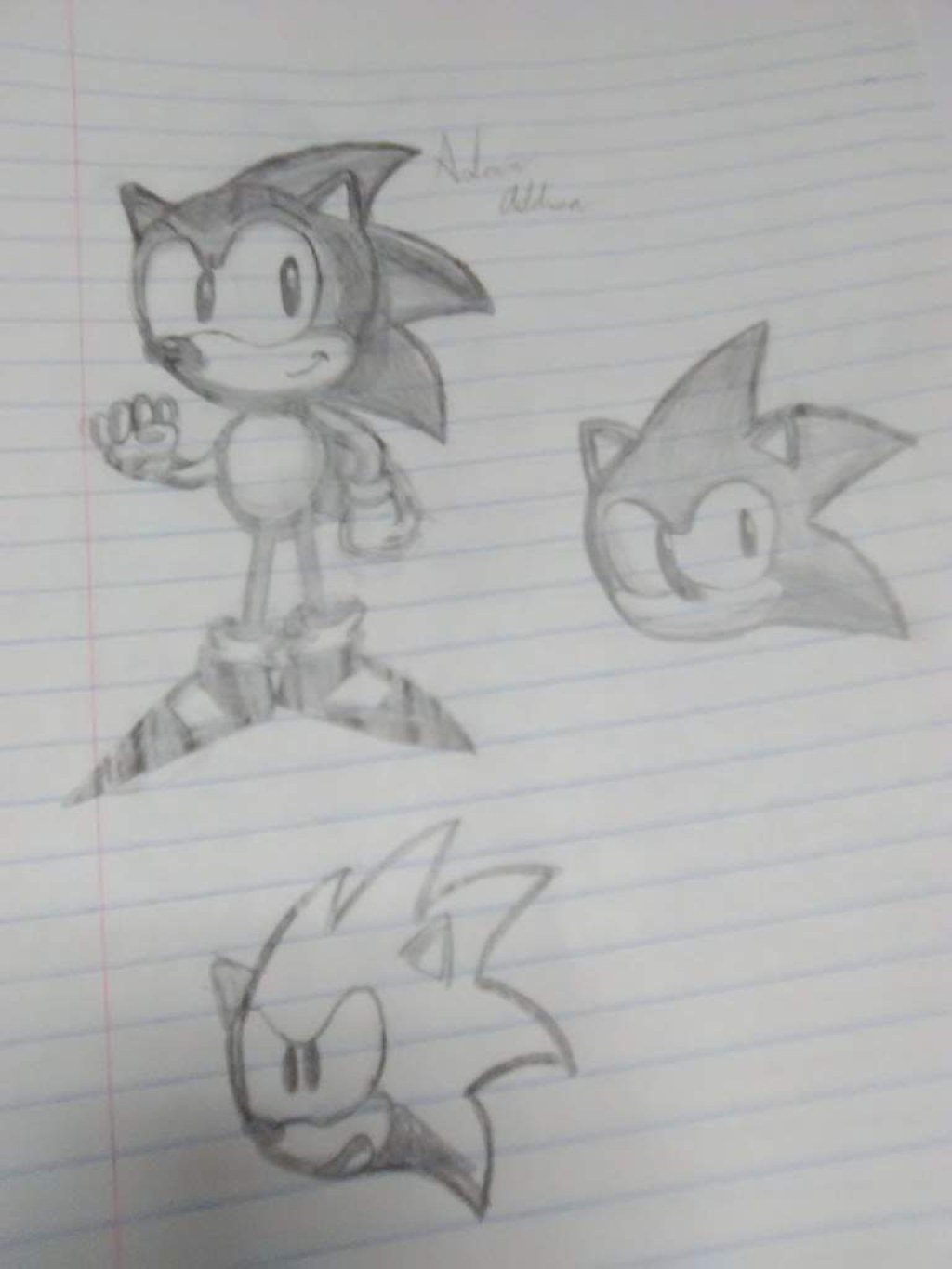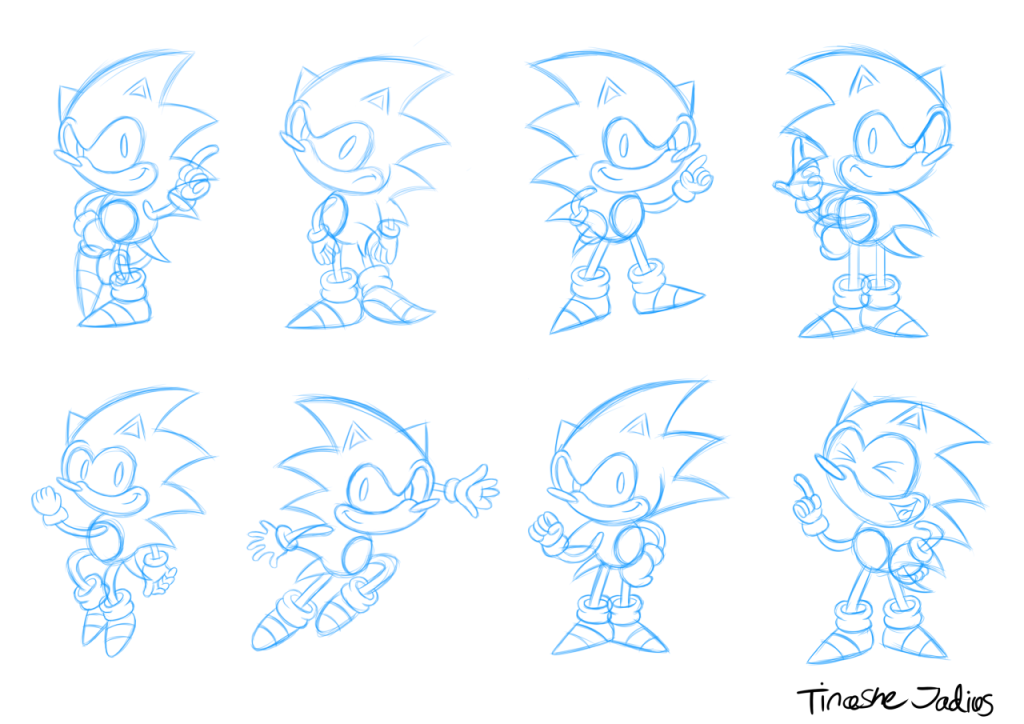Sonic Concept Art 1990: A Glimpse into the Iconic Blue Hedgehog’s Early Designs
Welcome, Art Enthusiasts! Today, we delve into the world of Sonic the Hedgehog and explore the fascinating concept art from 1990. As a beloved character in the gaming industry, Sonic has captured the hearts of millions worldwide. Join us as we take a nostalgic trip back in time to witness the birth of this iconic blue hedgehog and discover the intriguing artistic process behind his creation.
Introduction
Sonic the Hedgehog, a character created by Sega, made his first appearance in 1991. However, the journey to his final design started a year earlier in 1990. Concept art plays a crucial role in the development of a character, serving as a visual representation of ideas and inspiration for the final product.
In this article, we will explore the Sonic Concept Art 1990 that showcases the early designs and ideas that eventually led to the creation of the popular video game character we know today. Let’s dive into the details of what, who, when, where, why, and how this concept art came to be.
What is Sonic Concept Art 1990?
Sonic Concept Art 1990 refers to the collection of early sketches, illustrations, and designs that were created during the initial stages of developing Sonic the Hedgehog. These artworks provided the foundation for the character’s visual identity and served as a starting point for further refinement.
The Evolution of Sonic
Image Source: twimg.com
Within the Sonic Concept Art 1990, we can witness the evolution of Sonic’s appearance. From his original design as a more realistic-looking hedgehog to his iconic blue color and trademark red shoes, the concept art showcases the various stages of transformation that ultimately shaped the character we know and love.
The Artistic Process
The concept art allowed the artists to experiment with different ideas, shapes, and features for Sonic. It provided them with the freedom to explore various possibilities and find the perfect balance between style and functionality. The art reflects the creativity and innovation behind Sonic’s design, capturing the essence of speed, energy, and playfulness.
Who Created the Sonic Concept Art 1990?
The Sonic Concept Art 1990 was primarily crafted by Naoto Ohshima, the original character designer for Sonic the Hedgehog. Ohshima’s artistic vision and talent were instrumental in shaping Sonic’s iconic appearance, laying the foundation for his success as a video game icon.
Collaboration and Iteration
Ohshima’s work was not done in isolation. He collaborated closely with Yuji Naka, the lead programmer for Sonic the Hedgehog, and Hirokazu Yasuhara, the game’s designer. Together, they refined and iterated on the concept art to ensure that Sonic’s design aligned with the game’s objectives and mechanics.
When Was the Sonic Concept Art 1990 Created?

Image Source: aminoapps.com
The Sonic Concept Art 1990 was created in the year 1990, a year before Sonic the Hedgehog was officially released in 1991. This early development phase allowed the creators to experiment and iterate on the character’s design, ensuring that Sonic would become an instant icon in the gaming world.
Where Can We Find the Sonic Concept Art 1990?
The original Sonic Concept Art 1990 is housed in Sega’s archives and remains a valuable piece of gaming history. While not readily accessible to the public, some images and replicas of the concept art can be found online, allowing fans to catch a glimpse of Sonic’s early designs.
Why is the Sonic Concept Art 1990 Significant?
The Sonic Concept Art 1990 holds great significance as it showcases the birth of one of gaming’s most iconic characters. It provides a unique opportunity to understand the artistic process and the evolution of Sonic’s design, highlighting the dedication and creativity of the developers involved in his creation.
Inspiration for Future Designs
By exploring the Sonic Concept Art 1990, we can gain insights into the inspiration and influences that shaped Sonic’s design. This early artwork laid the foundation for future iterations and adaptations of the character, ensuring that Sonic remains relevant and beloved by fans across generations.
How Was the Sonic Concept Art 1990 Created?

Image Source: tumblr.com
The Sonic Concept Art 1990 was created using traditional artistic techniques, such as hand-drawn sketches and illustrations. The artists involved in the project employed their skills and creativity to bring Sonic to life on paper, capturing his essence and personality through their artwork.
From Concept to Reality
Once the initial concept art was completed, it served as a reference for the development team to transform the 2D sketches into a fully realized 16-bit video game character. The transition from concept art to the final product required technical expertise and collaboration between artists, programmers, and designers.
Pros and Cons of Sonic Concept Art 1990
Pros
1. Historical Significance: The Sonic Concept Art 1990 offers a glimpse into the early stages of Sonic’s creation, making it invaluable for gaming enthusiasts and historians.
2. Artistic Inspiration: The concept art serves as a source of inspiration for aspiring artists and game developers, providing insights into the artistic process and design evolution.
3. Nostalgic Value: For long-time Sonic fans, the concept art evokes a sense of nostalgia, allowing them to reminisce about the early days of their favorite character.
Cons
1. Limited Accessibility: The original concept art is not easily accessible to the public, and replicas may not fully capture the intricacies and details of the original artwork.
2. Lack of Context: While the concept art offers visual representation, it may not provide in-depth explanations or insights into the decision-making process behind the designs.
3. Subjectivity: Artistic preferences vary, and some individuals may not resonate with or appreciate the early concept art as much as the final design.
Frequently Asked Questions (FAQs)
1. Was Sonic always intended to be a blue hedgehog?
Yes, Sonic was always intended to be a blue hedgehog. The color blue was chosen to represent Sega’s brand identity and to make Sonic visually distinct in the vibrant and fast-paced game environments.
2. How long did it take to finalize Sonic’s design?
The process of finalizing Sonic’s design took several months. The concept art phase, including iterations and refinements, lasted for approximately a year before the character’s official debut in 1991.
3. Are there any unused concept art designs for Sonic?
Yes, there are some unused concept art designs for Sonic. These designs might feature different color schemes, additional accessories, or alternative character proportions that were ultimately discarded in favor of the final design.
4. How did the concept art influence Sonic’s personality?
The concept art played a significant role in shaping Sonic’s personality. The dynamic and energetic poses showcased in the art helped establish Sonic as a character known for his speed, agility, and rebellious nature.
5. Has the Sonic concept art influenced other game character designs?
Yes, the Sonic concept art has had a significant influence on other game character designs. Sonic’s vibrant color scheme, expressive eyes, and spiky hairstyle have inspired countless characters in the gaming industry, demonstrating the enduring impact of the original concept art.
Conclusion
In conclusion, the Sonic Concept Art 1990 offers a captivating glimpse into the early designs and ideas that shaped one of gaming’s most beloved characters. It showcases the artistic journey from initial concept to final design, highlighting the talent and creativity that went into creating Sonic the Hedgehog.
Whether you are a long-time fan or new to the world of Sonic, exploring the concept art provides a deeper appreciation for the character and the incredible artistic process behind his creation. So take a moment to immerse yourself in the Sonic Concept Art 1990 and experience the magic of this iconic blue hedgehog.
Final Remarks
Disclaimer: The information presented in this article is based on available knowledge regarding Sonic Concept Art 1990. While efforts have been made to ensure accuracy, discrepancies may exist due to the limited accessibility of the original concept art. We encourage further research and exploration to gain a comprehensive understanding of this fascinating topic.